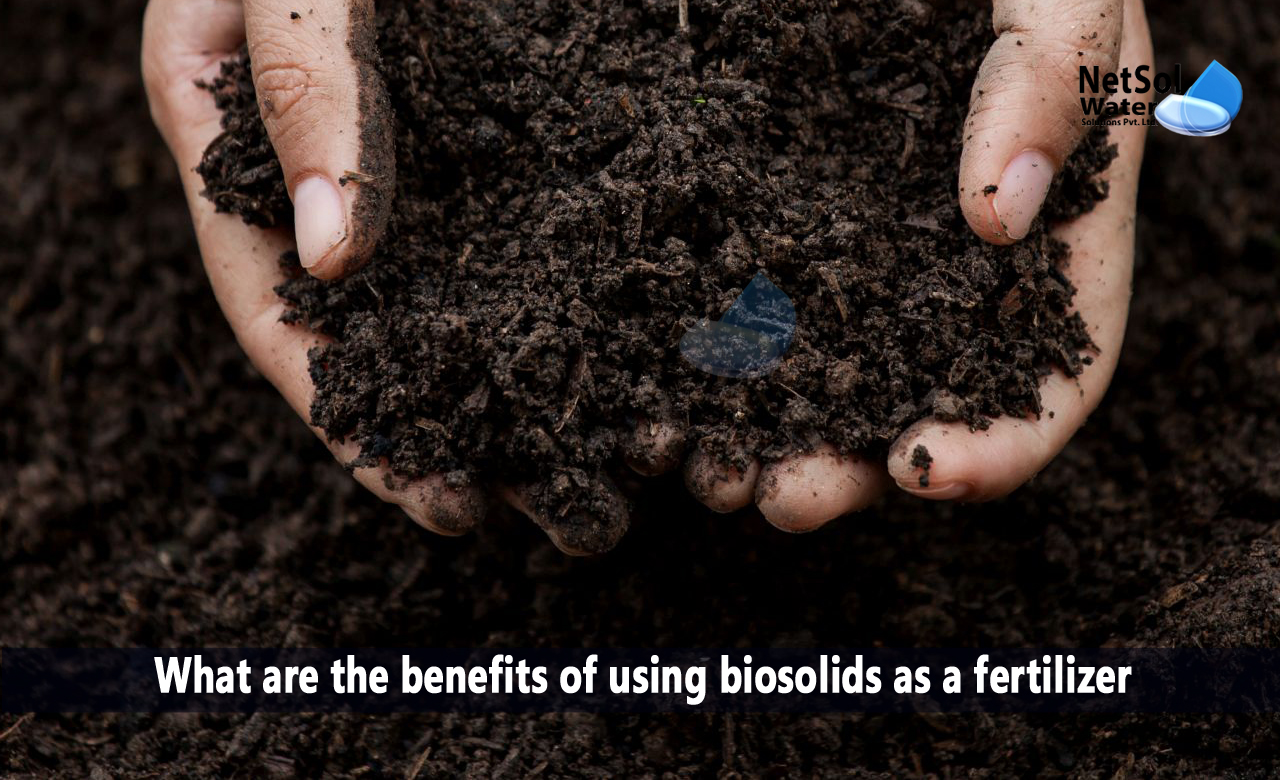What are the benefits of using biosolids as a fertilizer?
A prominent consequence of sewage water treatment is biosolids. When handled and controlled properly, they can serve a number of functions. The sewage sludge that has been treated is known as biosolids.
Solids collected during the wastewater treatment process but not further processed are referred to as sewage sludge. Typically, sludge comprises up to 3% solids. The sewage sludge that has undergone additional processing to considerably lower microorganisms, which cause disease and volatile organic matter are referred to as biosolids. This results in a stabilized product that is suited for beneficial usage. Typically, biosolids contain between 15% and 90% solids.
Let’s understand the bene?fits of using biosolids as a fertilizer!
Supply of nutrients: One of the biggest benefits of biosolids land application is the supply of nutrients that plants need, like nitrogen (N), phosphorus (P), and potassium (K). Farmers can acquire inexpensively plant-available nutrients, mainly nitrogen and phosphorus, by applying biosolids to crops.
Increases output: An increase in the yield is the main reason of applying biosolids to soil. The increased output is attributed to the biosolids' abundance of a variety of trace minerals. The general health of the soil ecosystem is impacted by the presence of trace minerals.
The majority of soils lack the trace elements (heavy metals) that plants need for wholesome growth. By adding biosolids to the soils, trace mineral deficiencies can be cured. Because, they include nearly all of the necessary trace elements, including zinc (which is chronically lacking in soils yet is necessary for crop growth), vanadium, chromium, iron, copper, cobalt, and molybdenum, biosolids are like soil vitamin pills.
Addition of organic matter: Increased organic matter is one of the biosolids' indirect advantages. Agronomic biosolids application rates are insufficient to directly influence the growth of organic matter. The increase in plant wastes after harvest, such as leaves and stems, as well as, more crucially, the expansion of plant roots in the soil, are credited with the rise in organic matter from biosolids.
The availability of trace elements for plant absorption is improved by microbial breakdown, and conversion of plant wastes into organic matter. After harvest, plant residues left above and below the soil's surface, function as a wind and rain screen, assisting in erosion management.
Enhance soil structure: Improved soil structure is one of the long-term advantages of putting biosolids to land. A material that binds soil particles together to form blocks is produced, during the decomposition of biosolids.
The ultimate result is a stable soil with good physical characteristics. Increased porosity in improved-structured soils enhances water root penetration, and reduces bulk density. These elements combine to provide beneficial soil tilth.
Help the community: Because, it creates much-needed room in sanitary landfills, the application of biosolids to the land benefits communities.
Compared to disposal options like incineration or landfilling, terrestrial application of biosolids is substantially less expensive for the community. Additionally, land application offers a chance for farmers and the city, to work together on a profitable project.
Conclusion
For local authorities and operators, the growing amount of biosolids generated by wastewater treatment, in tandem with population growth and urban sprawl, is a major source of concern. Biosolids treatment is now required in order to recover products and reduce volume.
Netsol Water assists you in defining and selecting the best biosolids treatment option for you, according to:
· the sludge's composition, where it came from, and
· where it will end up after treatment (recycling, recovery, disposal)
For further information or to make a purchase of advanced water and wastewater treatment plants, please contact us at +91-9650608473 or enquiry@netsolwater.com



